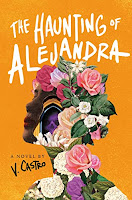Some might erroneously call the horror genre one-dimensional since the basic definition talks about “any story that generates a fear reaction,” but fear is more a spectrum rather than one single emotion and stories can cater to any position on said spectrum. There are horror stories that feel like a cold breeze across your skin, there are horror stories that feel like a hot breath across the back of your neck, and then there are horror stories that feel like a thousand little legs scurrying beneath your skin. Andrew Cull, in particular, is a writer that seems to write with the sole purpose of getting under one’s skin, not only to get to the meat underneath but to leave a little something behind that is sure to hatch and grow formidable within the mind of the reader. One such example of this ability to burrow under the reader’s skin is his novella The Cockroach King.
Single mother Cassie Baker thinks that she’s found the perfect house for her and her baby boy Sam. It reminds her of growing up with her mother, there’s plenty of room, and the neighbors seem friendly, if a little unusual. There’s just the issue of the dead animals that she finds buried on the property. And the cockroaches. LOTS of cockroaches. There is something else buried underneath her house, and she might be the only one capable of protecting her and her child before what lives beneath her demands its pound or so of flesh.
I read Cull’s Remains and it was a haunted house story that truly shocked me because of its willingness to dig at emotional scabs and taboo subjects. Reading this book makes me think Cull is a writer who will always “go there.” Dead dogs? Check. Insect swarms that guarantee a skin-crawling experience? Check. Putting women and young children in danger? BIG CHECK!
Now this isn’t saying that Cull is shamelessly exploiting and glorifying violence and revulsion. Andrew Cull is a writer who knows how to hit the readers’ pressure points. Those pressure points might be anything from horrifying scenarios to terrors that might hit you or your loved ones. He might be a writer who’d make trigger warnings mandatory, but if you’d rather survive a horror story than read it, Andrew Cull might be the madman you’re looking for.



